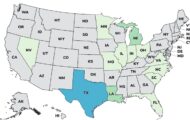The FDA has released their Action Plan to reduce heavy metals in baby food and other foods that children eat. A report released by the United States House of Representatives in February found that commercial baby foods were “tainted with significant levels of toxic heavy metals, including arsenic, lead, cadmium, and mercury.”
That report also stated that “Exposure to toxic heavy metals causes permanent decreases in IQ, diminished future economic productivity, and increased risk of future criminal and antisocial behavior in children. Toxic heavy metals endanger infant neurological development and long-term brain function.”

The action plan, called Closer to Zero, details the approach the government will take. The press release did insist that FDA testing found that children are not at “immediate risk” from exposure to toxic elements at the levels found in foods.” But it’s exposure over time to higher levels of these toxins that causes permanent damage.
Action levels are a level of contamination at which a food might be regarded as adulterated as defined in section 402(a)(1) of the Federal Food, Drug, and Cosmetic Act. The FDA looks at action levels when considering to bring enforcement action against a company.
The plan states that it is not possible to get toxic elements in foods down to zero because these elements are present in the air, water, and soil sued to grow crops. For instance, rice grown in the southern United States is naturally higher in arsenic than rice grown in other parts of the country because it is grown on land that was used to grow cotton at a time when arsenic was used as a pesticide, and because of the way rice is grown.
The action plan to reduce heavy metals in baby food is divided into four stages. The first is to evaluate the scientific basis for action levels, which means looking at data from testing of the food supply, research and data on analytical methods, toxicological assays, and exposure and risk assessments. The FDA will establish interim reference levels for certain toxic elements.
Next, the government will propose action levels using interim reference levels for certain toxic elements in the different categories of baby foods and other foods eaten by babies and young children.
Third, the FDA will consult with stakeholders after gathering data and information. This could take the form of workshops, scientific meetings, and collaboration with federal partners. They will look at the achievability and feasibility of the proposed action levels and timeframes.
Finally, action levels will be defined. Information from the previous three steps will be used to make adjustments as needed.
Once the action levels are published, a timeframe for assessing industry’s progress toward meeting those levels will be established. The metals that will be targeted include arsenic, lead, cadmium, and mercury. The agency will begin with lead, since the most data is available for that metal.
For lead, the government has established a blood reference level of 5 micrograms of lead per deciliter of whole blood as the amount where they recommend clinical monitoring of lead exposure in children. They calculated a maximum daily intake for lead form food, the interim reference level. The IRL is 3 micrograms per day for children and 12.5 micrograms per day for adults, which is critical for women of childbearing age.
The American Academy of Pediatrics and the Center for Disease Control and Prevention both say that there is no safe level of lead for babies and children.
Meanwhile, to protect your children from heavy metals and other toxins in food, feed them a wide variety of foods and do not rely on one particular food as their main source of nutrition. And consider other options besides rice cereal as babies’ first food. Unfortunately, choosing organic foods will not automatically reduce your child’s exposure to heavy metals but will eliminate other toxins.




